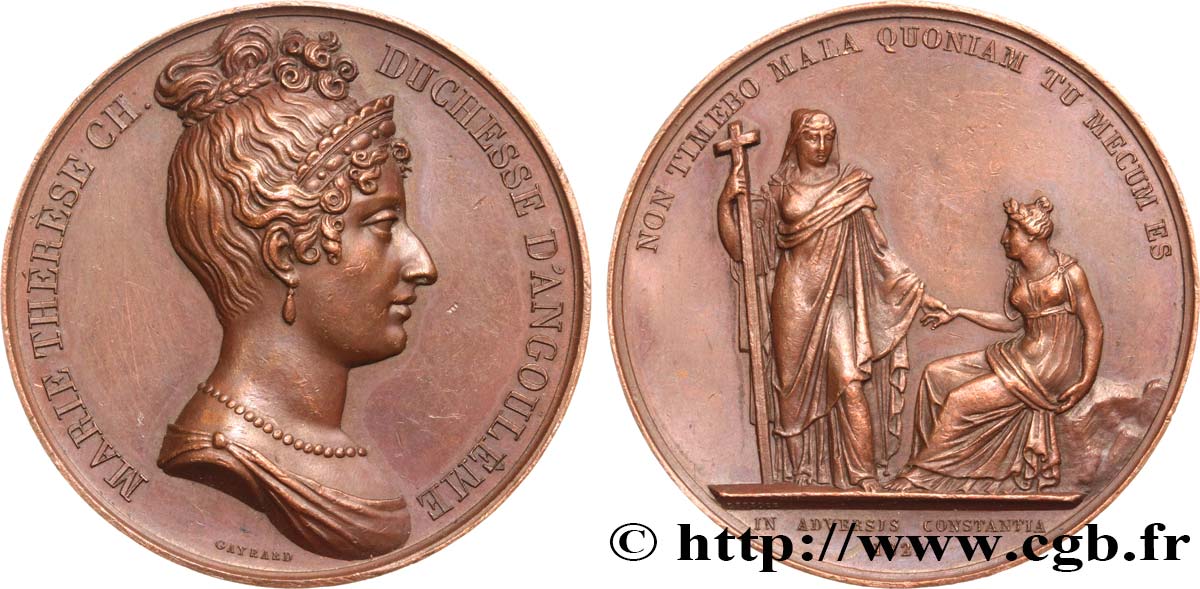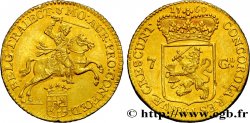Live auction - fme_519545 - LUDWIG XVIII Médaille, Marie-Thérèse Charlotte de France
Sie müssen angeschlossen sein und von cgb.fr genehmigt werden, um in einer E-Auktion teilzunehmen.Melden Sie sich an, um zu wetten..Die Kontobestätigungen sind innerhalb von 48 Stunden nach Ihrer Anmeldung gemacht.Warten Sie nicht bis die letzten zwei Tage vor dem Abschluss eines Verkaufs, um Ihre Registrierung abzuschließen. Klickend "BIETEN" verpflichten Sie sich vertraglich, diesen Artikel zu kaufen und Sie nehmen ohne Reserve die allgemeinen Verkaufsbedingungen für den live auctions zu cgb.fr an.
Der Verkauf wird an der Zeit auf der Übersichtsseite angezeigt geschlossen werden. Angebote, die nach der Schließung Zeit empfangen sind, werden nicht gültig.
Bitte beachten Sie, dass die Fristen für die Einreichung Ihres Angebots auf unsere Server können variieren und es kann zur Ablehnung Ihres Angebots entstehen, wenn es in den letzten Sekunden des Verkaufs gesendet wird. Die Angebote sollen mit ganzer Zahl ausgeführt sein, Sie können Kommas oder des Punktes in Ihrem Angebot nicht erfassen. Bei Fragen klicken Sie hier, um einen Blick auf die FAQ Live-Auktionen.
Alle Gewinngebote unterliegen einem Aufschlag von 18 % für Verkaufskosten.
Alle Gewinngebote unterliegen einem Aufschlag von 18 % für Verkaufskosten.
| Schätzung : | 150 € |
| Preis : | 75 € |
| Höchstgebot : | 75 € |
| Verkaufsende : | 29 Januar 2019 17:36:32 |
| Bieter : | 1 Bieter |
Type : Médaille, Marie-Thérèse Charlotte de France
Datum: 1821
Metall : Bronze
Durchmesser : 40,5 mm
Stempelstellung : 12 h.
Graveur GAYRARD Raymond (1777-1858)
Gewicht : 38,1 g.
Rand lisse
Punze : sans poinçon
Kommentare zum Erhaltungszustand:
Patine hétérogène. Présence de coups et rayures suite à un léger nettoyage dans les champs
Vorderseite
Titulatur der Vorderseite MARIE THÉRÈSE CH. - DUCHESSE D’ANGOULÊME.
Beschreibung Vorderseite Buste à droite de la duchesse d’Angoulême. Signé : GAYRARD.
Rückseite
Titulatur der Rückseite NON TIMEBO MALA QUONIAM TU MECUM ES // À L’EXERGUE : IN ADVERSIS CONSTANTIA / 1821..
Beschreibung Rückseite La Religion tenant la main d'une femme assise. Signé sur la plinthe : LEVEQUE.
Kommentare
Marie-Thérèse Charlotte de France, surnommée « Madame Royale », née le 19 décembre 1778 à Versailles et morte le 19 octobre 1851 à Frohsdorf en Autriche, est le premier enfant de Louis XVI et Marie-Antoinette. Après une enfance passée à la Cour, elle est la seule des enfants royaux à survivre à la Révolution française. Condamnée par les insurgés puis réduite à l’exil, Marie-Thérèse Charlotte, devenue Dauphine de France en 1824, et qui aurait pu devenir reine de France lors des journées de 1830, reste attachée à la monarchie jusqu’à la fin de sa vie. C'est en exil sous le titre de courtoisie de “comtesse de Marnes” qu'elle décède le 19 octobre 1851 à Frohsdorf en Autriche.
En tant qu'unique rescapée de la famille royale stricto sensu, la timide princesse devint alors bien malgré elle, une véritable « célébrité ». Pour tous c'est « l'Orpheline du Temple », nom qui ne la quitte plus. Ses admirateurs vont ainsi jusqu’à louer un appartement en face du Temple : on la scrute pour rendre compte de ses faits et gestes quotidiens et mieux la réinventer. Plus largement, on en fait l’héroïne de chansons, de poèmes et de récits au goût du jour, qui ont sa souffrance et son histoire, et non son rang, pour principal ressort. Elle devient alors le meilleur agent de propagande des royalistes, instrument politique, certes, mais un instrument révéré et adoré de ses partisans et ce durant toute sa vie.
Marie-Thérèse Charlotte of France, nicknamed \\\"Madame Royale\\\", born on December 19, 1778 in Versailles and died on October 19, 1851 in Frohsdorf in Austria, is the first child of Louis XVI and Marie-Antoinette. After a childhood spent at Court, she was the only royal child to survive the French Revolution.. Condemned by the insurgents and then reduced to exile, Marie-Thérèse Charlotte, who became Dauphine of France in 1824, and who could have become Queen of France during the events of 1830, remained attached to the monarchy until the end of her life.. It was in exile under the courtesy title of “Countess of Marnes” that she died on October 19, 1851 in Frohsdorf, Austria..
As the only survivor of the royal family in the strict sense, the shy princess then became, in spite of herself, a real \\\"celebrity\\\".. For everyone she is \\\"the Orphan of the Temple\\\", a name that never leaves her.. Her admirers even go so far as to rent an apartment opposite the Temple: she is scrutinized to report on her daily actions and better reinvent her.. More broadly, she is made the heroine of songs, poems and stories in the style of the day, which have her suffering and her story, and not her rank, as their main driving force.. She then became the best propaganda agent of the royalists, a political instrument, certainly, but an instrument revered and adored by her supporters throughout her life.
En tant qu'unique rescapée de la famille royale stricto sensu, la timide princesse devint alors bien malgré elle, une véritable « célébrité ». Pour tous c'est « l'Orpheline du Temple », nom qui ne la quitte plus. Ses admirateurs vont ainsi jusqu’à louer un appartement en face du Temple : on la scrute pour rendre compte de ses faits et gestes quotidiens et mieux la réinventer. Plus largement, on en fait l’héroïne de chansons, de poèmes et de récits au goût du jour, qui ont sa souffrance et son histoire, et non son rang, pour principal ressort. Elle devient alors le meilleur agent de propagande des royalistes, instrument politique, certes, mais un instrument révéré et adoré de ses partisans et ce durant toute sa vie.
Marie-Thérèse Charlotte of France, nicknamed \\\"Madame Royale\\\", born on December 19, 1778 in Versailles and died on October 19, 1851 in Frohsdorf in Austria, is the first child of Louis XVI and Marie-Antoinette. After a childhood spent at Court, she was the only royal child to survive the French Revolution.. Condemned by the insurgents and then reduced to exile, Marie-Thérèse Charlotte, who became Dauphine of France in 1824, and who could have become Queen of France during the events of 1830, remained attached to the monarchy until the end of her life.. It was in exile under the courtesy title of “Countess of Marnes” that she died on October 19, 1851 in Frohsdorf, Austria..
As the only survivor of the royal family in the strict sense, the shy princess then became, in spite of herself, a real \\\"celebrity\\\".. For everyone she is \\\"the Orphan of the Temple\\\", a name that never leaves her.. Her admirers even go so far as to rent an apartment opposite the Temple: she is scrutinized to report on her daily actions and better reinvent her.. More broadly, she is made the heroine of songs, poems and stories in the style of the day, which have her suffering and her story, and not her rank, as their main driving force.. She then became the best propaganda agent of the royalists, a political instrument, certainly, but an instrument revered and adored by her supporters throughout her life.








 Berichten über einen Fehler
Berichten über einen Fehler Die Seite drucken
Die Seite drucken Teilen meiner Auswahl
Teilen meiner Auswahl Stellen Sie eine Frage
Stellen Sie eine Frage Einlieferung/Verkauf
Einlieferung/Verkauf
 Details
Details















